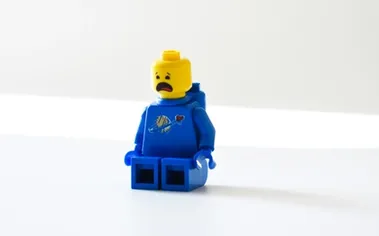The team meeting seems perfectly normal. Everyone's giving their updates, deadlines are being met, and nobody's complaining about workload. Your top performer mentions they've finished the quarterly analysis ahead of schedule. The project manager confirms all deliverables are on track. You wrap up feeling confident about team health and project momentum.
What you missed: that same top performer used to ask three follow-up questions about objectives and suggest two improvements to the approach. Today they just confirmed completion and moved on. The project manager, who typically shares context about stakeholder feedback, gave a bare-bones status update. Two team members who usually contribute ideas during planning stayed silent throughout the discussion.
You're looking at a team in the early stages of burnout, but the signals are hiding behind successful delivery metrics. Most leaders focus on obvious burnout indicators like complaints or missed deadlines, but these dramatic symptoms appear months after the real warning signs emerge. By then, you're managing crisis rather than preventing it.
The subtle behavioural changes that predict burnout happen during regular team interactions, hidden in plain sight.
The Signals Hiding in Plain Sight
Burnout doesn't announce itself with dramatic declarations. It emerges through gradual shifts in how people engage with their work, particularly changes that look neutral or even positive on the surface.
When Excellence Becomes Going Through the Motions
Your highest performers often mask burnout most effectively because they continue delivering quality work whilst internally disconnecting from the creative and collaborative aspects that made them excellent.
Watch for engagement pattern changes in your most capable team members. The senior analyst who used to propose process improvements now completes assignments without additional input. The team lead who previously challenged assumptions and suggested alternatives accepts every decision without discussion. The quality manager who once provided detailed context about potential risks now gives basic pass/fail updates.
These shifts represent the difference between someone who's invested in outcomes versus someone who's completing tasks. When high performers stop contributing beyond their immediate assignments, they're often protecting their remaining energy by avoiding additional cognitive load.
I've seen this pattern repeatedly in fast-paced organisations where excellent people gradually shift from ownership thinking to execution thinking. They're still performing well by traditional metrics, but they've stopped bringing the insights and initiative that made them valuable.
The Engagement Shift Pattern
Pay attention to how people participate in team activities beyond their core responsibilities. Burnout often manifests as withdrawal from optional but valuable interactions that build team cohesion and shared understanding.
Notice changes in informal communication patterns. Someone who used to share interesting articles or ask colleagues about their weekend stops initiating social interaction. Team members who previously stayed for post-meeting discussions now leave immediately when the agenda finishes. People who once volunteered for challenging assignments wait to be assigned work.
The key insight is recognising that engagement shifts happen before performance drops. People maintain professional standards whilst reducing emotional investment in team relationships and shared goals. This creates a concerning disconnect where teams function technically but lose the collaborative energy that drives innovation and problem-solving.
Simple observation approach: Notice changes in team member energy and engagement during existing interactions rather than creating new tracking systems.
Team Dynamic Warning Signs
Individual burnout creates ripple effects that change how teams interact, producing observable patterns that leaders can spot before anyone explicitly raises concerns.
When Team Chemistry Changes
Teams develop natural collaboration rhythms over time. When multiple people begin experiencing burnout, these patterns shift in ways that affect group problem-solving and support systems.
Notice increased tension during discussions that used to flow smoothly. Teams that previously resolved disagreements quickly find themselves stuck in circular conversations. People who normally build on each other's ideas start talking past each other or providing minimal responses to suggestions.
Watch for changes in how team members support each other during challenging periods. Previously collaborative groups might see people working in silos, avoiding requests for help, or providing technical assistance without the broader context that makes guidance truly useful.
I've observed teams where burnout spreads through decreased knowledge sharing. People stop explaining their reasoning, provide less context in handoffs, and avoid the additional conversation that turns individual work into collective learning. The operational work continues, but team capability development stalls.
The Collaboration Breakdown Pattern
Healthy teams naturally share information, seek input, and offer assistance without formal processes. When burnout affects multiple team members, these spontaneous collaborative behaviours decrease significantly.
Look for communication becoming more transactional. Questions get answered without additional context. Updates become status reports rather than opportunities for input. People attend meetings but contribute minimally to discussions.
Cross-functional collaboration often deteriorates first. Teams dealing with burnout focus on internal priorities and avoid the additional complexity of working closely with other departments. This creates information gaps and missed opportunities that compound over time.
Natural awareness approach: Pay attention to team interaction changes during regular work without formal assessment processes.
What Leaders Miss Because They're Looking at the Wrong Metrics
Traditional performance indicators often mask burnout signals because people maintain productivity whilst reducing quality of engagement and long-term sustainability.
The Performance Paradox
Meeting deadlines and delivering outcomes can hide underlying team health problems. Teams experiencing burnout often compensate by working longer hours, taking shortcuts, or avoiding innovative approaches that require additional energy.
I've worked with teams that consistently hit project milestones whilst innovation, learning, and team satisfaction steadily declined. They were succeeding by narrow delivery metrics but failing to build sustainable capability or maintain the curiosity that drives long-term excellence.
Pay attention to how teams achieve their results, not just whether they achieve them. Are people asking fewer questions about objectives? Have creative problem-solving discussions decreased? Do team reviews focus only on process efficiency rather than exploring better approaches to challenges?
The absence of complaints doesn't indicate the absence of problems. Many professionals won't voice burnout concerns explicitly until they're already planning to leave or have reached crisis points that affect their personal lives.
Reading Between the Lines of Status Updates
Communication changes often provide the clearest burnout indicators if you're paying attention to engagement patterns rather than just information content.
Notice shifts in how people describe their work. Language that was previously solution-focused becomes problem-focused. Updates that used to include context and next steps become brief confirmations of task completion. People stop volunteering information that helps others understand dependencies or potential issues.
Watch for decreased participation in forward-looking discussions. Team members who used to contribute ideas about upcoming challenges or improvement opportunities limit their input to immediate task status. Planning meetings that previously generated multiple options and considerations produce minimal discussion.
Reading communication changes: Notice specific language and engagement shifts during normal work interactions.
Building Your Early Warning System
Effective burnout detection doesn't require new processes or formal assessment tools. It requires intentional attention to patterns that emerge through existing team interactions.
What to Watch For in Your Regular Interactions
Effective burnout detection integrates naturally with your existing management practices:
- Modify your one-to-ones to include space for people to share energy levels and engagement concerns without making it feel like performance evaluation. Ask open-ended questions about what's working well and what feels more challenging than it should.
- Notice participation patterns during team meetings alongside content delivery. Are the same people consistently contributing ideas? Has the energy during brainstorming or problem-solving sessions changed? Do people seem engaged with team goals beyond their individual assignments?
- Create psychological safety for team members to acknowledge struggles without fearing career consequences. When someone mentions feeling overwhelmed or uncertain, respond with curiosity and support rather than immediate problem-solving.
The goal is encouraging honest communication about challenges before they become performance issues.
When You Spot the Signals
Early intervention prevents burnout from escalating into performance crises:
- Start with conversation, not intervention. Acknowledge what you've observed without making it feel like criticism: "I've noticed you seem less engaged during our planning discussions lately. Is everything okay?"
- Consider workload adjustments that don't penalise people for raising concerns. Sometimes team members need temporary relief from optional responsibilities or additional support with challenging assignments.
- Build team resilience through sustainable work practices that prevent burnout rather than just responding to it. This includes realistic planning, protected time for learning and improvement, and team norms that support saying no to unreasonable demands.
- Practical integration: Make simple modifications to existing one-to-ones that reveal energy patterns, adjust team meetings to surface wellbeing alongside work progress, and develop natural ways to track team member engagement over time.
The investment in preventing burnout typically provides better returns than managing its consequences.
Building Prevention Into Your Leadership
The best burnout management happens before anyone experiences burnout. This requires understanding your role in creating conditions that either support sustainable performance or gradually exhaust your team's capacity.
Recognise that burnout signals provide information about your team's working environment, not just individual struggles. When multiple people show similar patterns, examine workload distribution, goal clarity, and support systems rather than focusing solely on individual resilience.
Start paying attention to energy and engagement patterns alongside delivery metrics. Notice changes in how people communicate, collaborate, and contribute to team goals. Respond to early signals with curiosity and support rather than waiting for explicit requests for help.
Most importantly, create team culture where acknowledging struggles enhances rather than threatens professional relationships. When people feel safe discussing challenges early, you can address problems before they become crises that affect both individual wellbeing and team performance.
The burnout signals are there. You just need to know where to look.




